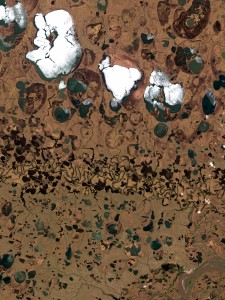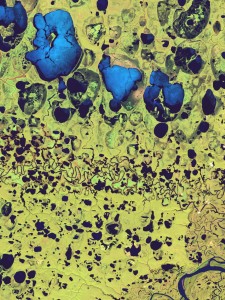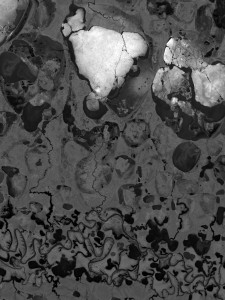by our staff writers
July 11, 2013
In it’s regular acquisition scheme, Landsat 8 maps the same location on Earth every 16 days. On July 5, 2013, Landsat 8 observed the Kytalyk area under an almost cloud-free scenario*.
NASA’s Landsat program is a series of Earth observing satellites operating since 1972 almost continuously! The first Landsat 8 scene was released on March 21, 2013 – just a few month’s ago! Landsat 8 carries two push-broom instruments: the Operational Land Imager (OLI), and the Thermal Infrared Sensor (TIRS). Here we show you some images from the OLI instrument.
OLI has 9 spectral bands (‘it can see (record) nine different colors at the time’). Eight of the spectral bands are recorded at 30 m spatial resolution, while one spectral band (band 8 in fact) is recorded at 15 m spatial resolution.
Since our eyes are limited to trichromacy, we can use any permutation of the eight (nine) Landsat bands to create colorful and meaningful images with three of the bands at the time. Each of the spectral bands in Landsat 8 have been designed to serve a distinct purpose. You can see below a nice graph showing atmospheric transmission and the location of the OLI and TIRS bands in the electromagnetic spectrum. Also you can see a comparison with the previous, Landsat ETM+ instrument’s spectral bands setting.
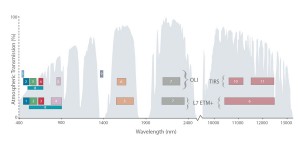
Atmospheric transmission and Landsat 7/8 band positions in the solar reflected / emitted wavelength range (Data: landsat.usgs.gov).
In the following figure, we have put together three different band combinations of Landsat 8. Left is a ‘natural color’ image, in which Landsat 8 band 4 is assigned to the color ‘red’ on your screen, Landsat 8 band 3 to ‘green’ and Landsat 8 band 2 to ‘blue’. This resulting in a RGB image. The middle image is called a ‘color infrared’ image (with the capability to display green vegetation in red). The corresponding band combination is 5->R, 4->G, 3->B. Finally, right is a false color image using the band combination 6->R, 5->G, 4->B.
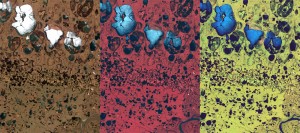
Three band combinations of Landsat 8 data of the Kytalyk area on July 5, 2013 (Data courtesy: NASA/USGS, earthexplorer.usgs.gov).
Band 8 of Landsat 8 is a so-called panchromatic band. This band is sensible to all visible wavelengths and is recorded with doubling the spatial resolution as compared to the other OLI bands. A band 8 image is therefore always in shades of grey, but records 4 pixels instead of one of the other bands.
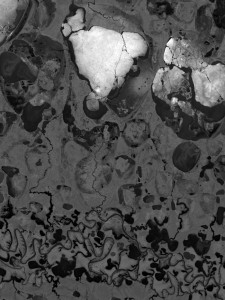
Panchromatic image (not at full resolution and jpeg compressed) of the Kytalyk area on July 5, 2013 (Data courtesy: NASA/USGS, earthexplorer.usgs.gov).
Should you have a good internet connection to this blog, you can download the following images in full resolution (still as jpeg’s with some compression noise). If you wish to see the whole scene (180 x 180 km) in original resolution (geoTIFF, no compression) – apologies for the techno-babble – look for LANDSAT_SCENE_ID = “LC81170102013186LGN00”, WRS_PATH = 117, WRS_ROW = 10 in a Landsat archive such as http://earthexplorer.usgs.gov/.
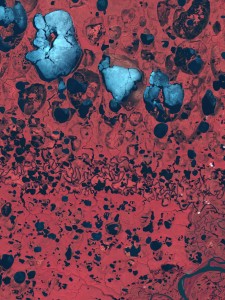
Color infrared composite based on a subset of a Landsat 8 scene recorded on July 5, 2013 (Data:USGS).
* Landsat 8 acquisition of all URPP GCB test sites is made possible with the support of ESA ESRIN’s Bianca Hoersch. Her support is greatly acknowledged!

